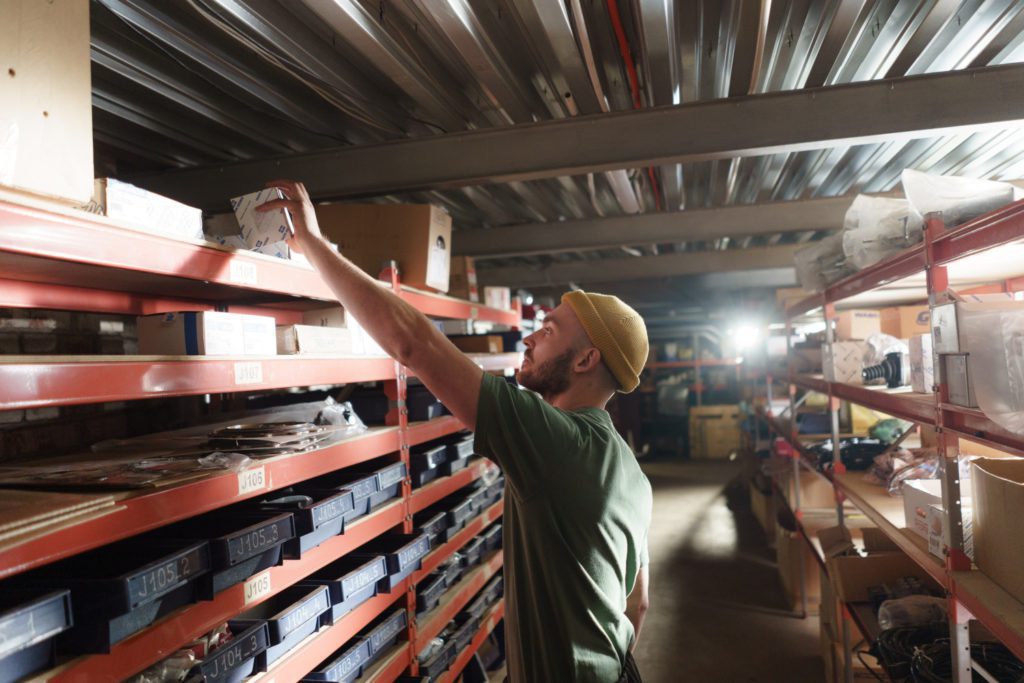For many people who aren’t familiar with prepping, it can seem excessive or even paranoid. What’s the point of going to all that work to build a sustainable supply when you can just go down the street and buy what you need? (Or, in today’s world, even have it delivered straight to your door?)
We’ve Been Warned
When the COVID-19 lockdowns began in 2020, we saw the beginning of a breakdown of what’s called the just-in-time (JIT) infrastructure. JIT is a manufacturing and distribution strategy that helps suppliers and retailers maximize their profits. This keeps retailers from having massive stocks of unsold inventory and informs manufacturers about the supply and demand of their products. It’s a proven strategy for keeping the supply chain moving, and it’s an obvious choice for retailers when it comes to profits.
However, for consumers, JIT infrastructure means we are relying on a teetering deck of cards that demands stability in every step: the manufacturing process, transportation and shipping, consistent demand, and retailer accessibility. Should a hiccup occur at any stage of the infrastructure, it’s the consumer who suffers.
The problems with the JIT infrastructure became apparent so quickly into the pandemic that the Financial Times1 published an article just a month into a lockdown that suggested supply chains should be more cautious and conservative with their supply strategies. The editorial board of the Financial Times writes, “…companies must transform their supply chains from “just in time” to “just in case” models.
The pandemic has underlined the need for suppliers and customers to work together. Afterward, it will be up to larger survivors, in particular, to help support the smaller and weaker components of their supply chains, rather than pursuing a beggar-thy-neighbor approach that destroys the chain altogether.” Thus, it became apparent that even the biggest proponents of the free market and consumerism realized that the JIT infrastructure could break down at the slightest wind of change, leaving consumers scrambling for necessities.
The History of the Just-In-Time Mindset
JIT infrastructure was not always how the world operated. Just a few generations ago, everyone who had the means to do so could have been considered a prepper by today’s standard. Before superstores, many people had no choice but to practice truly sustainable living. Families would often have gardens full of homegrown fruits and vegetables, consuming them fresh in season and preparing for winter by canning and preserving their stock. People often raised livestock and perfected the preserving process of salting or smoking meat to sustain them through lean seasons.
There were three major inventions in the 20th century that moved us as a society much further away from maintaining sustainable food supplies, and much further into the just-in-time mindset.
Invention #1
The first was the invention of the self-contained residential refrigerator in 1923, causing food preparation to become less necessary as consumers began to have the ability to buy what they needed as they needed it. Canning and preserving quickly started to fall out of fashion, and the meat was able to be preserved by cooling rather than other methods.
According to History Magazine’s write-up of the impact of refrigeration2, “Before 1830, food preservation used time-tested methods: salting, spicing, smoking, pickling and drying. There was little use for refrigeration since the foods it primarily preserved — fresh meat, fish, milk, fruits, and vegetables — did not play as important a role in the North American diet as they do today. In fact, the diet consisted mainly of bread and salted meats.” The article goes on to describe the change in diet that largely drove us to the JIT infrastructure we find today: “Consumer demand for fresh food, especially produce, led to diet reform between 1830 and the Civil War, fueled by the dramatic growth of cities and the improvement in the economic status of the general populace. And as cities grew, so did the distance between the consumer and the source of the food.”
As cities grew, so did the distance between the consumer and the source of the food.
Invention #2
Another concept that was introduced in the early 20th century was that of the supermarket. Before the 20th century, going to the market meant either going to a gathering of friends and neighbors selling from their stock, or going to the town store to request a certain amount of sustainable food such as grains or preserved meats or vegetables.
The early 20th century saw the quick progression into self-serve stores where consumers could buy pre-packaged items. As the concept took off in popularity, consumers learned that purchasing food didn’t have to be a time-consuming or planned event. It could be spontaneous, and it was easy enough to do it as often as one wanted. With a brand new refrigerator sitting at home, why not stop by a supermarket a few times a month to restock instead of going to the town store more sporadically?
Invention #3
As the 20th century marched on, and the post-war family and work structure changed, consumers became more drawn to quick-cook and pre-prepared foods. The middle of the 20th century saw the introduction of the microwave into homes, and with that, the just-in-time mindset took hold.
In the post-war society of the 50s and 60s, with more women joining the workforce, food companies saw an opportunity to market to busy families with two parents who were working. Who has time for a roast? Buy a frozen meal, cook it in the microwave, and have dinner on the table in thirty minutes or less – with no chopping or cooking!
McClurken.org3 describes the invention of the microwave as having shifted the American dietary priority toward convenience. “One of the most important reasons behind the microwave oven’s popularity was the convenience factor that it bought to kitchens… Now, meals could stay in the refrigerators remain for a few days, and be easily heated up. This meant that every day, people had access to good, quality, home-cooked meals every day that did not require lots of preparation and cleaning.”
With the success of “take and bake” products, food manufacturers jumped on the trend with both feet. Food manufacturers began to convince families that they didn’t have time to cook, and their lives were much too busy and exciting to worry about supply chains. After all, the American dream is excess, and excess means we can be sure we will live in abundance.
Food manufacturers began to convince families that they didn’t have time to cook, and their lives were much too busy and exciting to worry about supply chains.
So Why Prep?
The idea of sustainable living, and the concept of preparing in times of plenty for lean seasons, has been around for many more centuries than the convenience store era we now find ourselves in. What we’ve seen in the last century seems to be an abundance that is always available, but we also see how easily that structure collapses. Relying on a system that can collapse with natural disasters, economic instability, employee strikes, or – yes – unforeseen global pandemics is a game of roulette that many people have decided to opt-out of.

When we take time to consider what our family would need in an event where supplies became unavailable, when we intentionally build and organize an inventory, and when we plan for how we would use that supply in a sustainable way in the event of an emergency, we become part of a tradition that spans centuries of humanity. When we cease to be dependent on retailers and supply chains, we gain incredible peace of mind that takes the panic out of unpredictable world events.
When we cease to be dependent on retailers and supply chains, we gain an incredible peace of mind that takes the panic out of unpredictable world events.
The natural fear of scarcity that drives us is not an acceptance of conspiracy theories – it is a human instinct of survival, and one that leads us to prepare in advance for the unforeseen. Prepping isn’t about paranoia – it’s about leaning into the wisdom of the generations who have gone before us, who knew that we have to take responsibility for our own survival. The sustainable nourishment and hygiene of our families are not the responsibility of the government, the food manufacturers, or the supply chain. It is our own.




At the very least, people should be able to survive weeks where they cannot get food or water, which may happen in an emergency.
Agreed!
Amazing read! Thank you ?
Glad you liked it Christina! Thanks for your comment :)
Thinking of the future and all the upcoming scenarios are what smart people do and they succeed because they are prepared, great article
Completely agree!
Thanks. Informative and interesting. Great photo too.
Thanks for the comment!
Good info
Thanks
Nice!!!
That’s what it means to be prepared!
??
great post
Thanks for being here, and glad you liked the post!
Great article. Raising animals and gardening and therefore preserving food has been a part of my life for a long time but I don’t know many people that want to do this–too much work they say.
Thanks for your comment Sue! Nothing worth doing is easy right :)
thanks for all the info!
Thanks for being here!
we need about 1 gallon (~4 Liters) of water per day: 30 gallons = about 1 month (hint water heater)
Absolutely, water is definitely a critical first step in preparedness
Totally agree..??????.. survival is key
This is a very informative read, thank you for the information!
You’re very welcome Melissa! Glad it was helpful :)